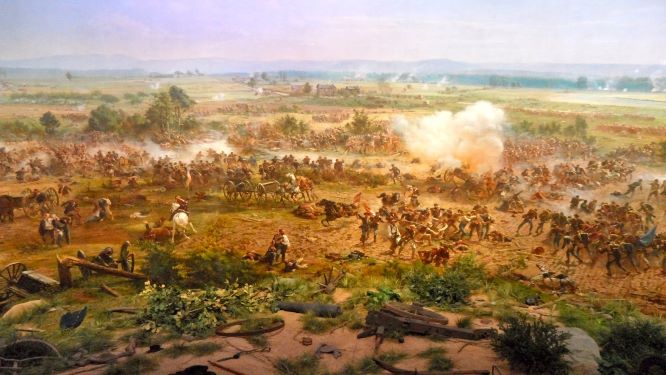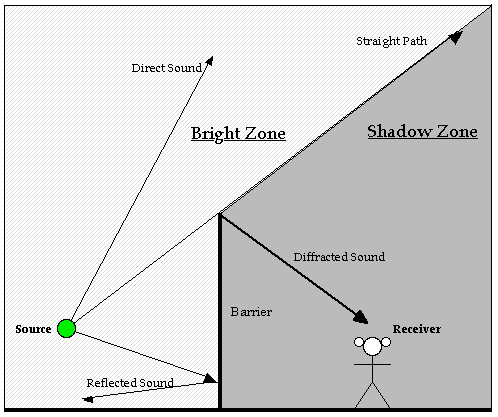And Acoustic Shadows
As I walked the dogs late Wednesday night, I heard explosions. The sounds were continuous, coming from the southeast. At first I thought I had been beamed over to Baghdad. Then I remembered that tonight was the night of the annual Detroit-Windsor fireworks display.
These cities have jointly celebrated the International Freedom Festival since 1959. This year, they set off about 10,000 fireworks in a thirty minute display.
The crowd was estimated at 850,000, which is supposedly lighter than usual. I remember reports in prior years of crowds in excess of one million. I have no idea how they come up with these numbers, since there are no turnstiles and tickets are not sold. But people fill every available vantage point on both sides of the Detroit River. For that matter, the river itself is filled with seemingly every boat in Michigan and Ontario.
It’s a great show and a vital part of Detroit’s heritage.
It used to be an annual event for our family, but the crowds got to be a bit much. A million people in a very tight space. All but a handful behave themselves and have a great time. But the handful can make the experience scary.
I was surprised that I could hear the fireworks so vividly on Wednesday. I live about 20 miles from the river, as the crow flies. And yet the fireworks sounded like they were going off a few miles away.

Today is the 142nd anniversary of the first day of the Battle of Gettysburg. The sound of the fireworks reminded me of the similar acoustic anomalies at that battle and at others of the Civil War.
The heavy fighting north and northwest of Gettysburg on the battle’s first day (July 1) was heard in Baltimore – 60 miles to the southeast. But it was barely audible to the Union’s XII Corps – only six miles in the same direction – which delayed the arrival of these reinforcements.
Robert E. Lee’s plans for the second day, July 2, was for an assault by James Longstreet’s corps at the Union left, and a simultaneous assault by Richard Ewell’s corps against the Union right (Culp’s Hill). Longstreet’s assault was ferocious (at The Peach Orchard, The Wheatfield, Devil’s Den, Plum Run, and Little Round Top), but it was not heard by Ewell. Ewell was only two miles away and expected to hear the beginning of Longstreet’s assault. The absence of battlefield sounds convinced Ewell that Longstreet had delayed his attack, and, so, Ewell delayed his as well. Ewell’s delay was intended to make his assault simultaneous with Longstreet’s but the result was exactly the opposite.
Probably the greatest bombardment of the war occurred on day three of Gettysburg, July 3rd. Virtually all of the cannon of Lee’s army (between 138 and 179 – historians still debate how many) fired at the Union center on Cemetery Ridge for two hours. This bombardment was intended to soften the Union center in advance of yet another Confederate assault (known as “Pickett’s Charge”). This bombardment was barely heard in Chambersburg, Pennsylvania (25 miles northwest), but was heard in Philadelphia (75 miles to the east), Pittsburgh (150 miles to the northwest) and Baltimore.
(You probably know that Pickett’s charge failed, but did you know that the Confederate bombardment was virtually useless? The initial rounds overshot the Union line, although they did hit some caissons and stores of ammo. This created the illusion of being on target, and the Confederate artillery men continued to overshoot the target. The intense smoke created by the bombardment made it even more difficult to spot targets. As it turned out, the safest place to be during the bombardment was directly on the Union line. The soldiers on the line witnessed the shells flying overhead but were largely unhurt.)

The acoustics were even more peculiar in Perryville, Kentucky, on October 8, 1862. Union commander Don Carlos Buell maneuvered his army in close proximity of the Confederates and expected to do battle the next day. But the two armies clashed that day in the bloodiest battle fought in Kentucky during the war.
General Buell spent the entire battle in his headquarters, 2 ½ miles from the field. He was unaware of the battle until it was over. Neither he, nor anyone in his HQ, heard a thing and no one on the battlefield thought to go get him.
In the days before radio and electronics, communications within an army were often slow. Armies sometimes “marched to the sound of the guns”. Of course, if they couldn’t hear the guns, they didn’t know where to march to.

Humidity, prevailing winds, regional topography and geology all affect the movement of sound and the distance at which it can be heard. It was not unusual for an acoustic shadow to prevent those close to the sound from hearing it. The same conditions can sometimes cause the sound to travel beyond the range one would expect.
I don’t know if there were any acoustic shadows anywhere near the International Freedom Festival. There certainly wasn’t one where I was walking the dogs.
